

Thyristor
Thyristors have an important role within circuits as solid-state switching devices perfect for handling higher currents which transistors aren't suitable for. These powerful on-off switches can be ideal for use within industrial equipment and building a wide variety of circuits.
There are multiple types of thyristor available, including dual thyristor modules and three-phase thyristor power regulators, each with its own characteristics designed to complement certain applications.
You can find thyristors to your exact specifications within our extensive range on offer from the leading thyristor manufacturers, such as Vishay, STMicroelectronics, and NTE Electronics. Simply filter your search by the parameters you'll be working with and choose the ideal component that meets your criteria.
What is a thyristor?
A thyristor is a four-layered, three-junction semiconductor switching device used within circuits with high current. It consists of three electrodes: an anode (positive terminal), a cathode (negative terminal), and a gate.
The gate is the main control terminal, while the main current flows between the anode and cathode. The gate terminal is used to trigger the thyristor by providing a small voltage to this terminal and turns off when the voltage across the anode-cathode drops back down to zero.
The overall effect achieved through using a thyristor is the creation of a latching circuit - a circuit which has two stable states (0 or 1, or off and on).
How does a thyristor work?
Standard thyristors are unidirectional devices similar to diodes, which means it flows current only in one direction. It consists of three P-N junctions in series as it has four layers. These junctions, like with many discrete semiconductors, are made of N-type and P-type materials.
The N-type material is doped by an element with electrons to increase the number of negative charge-carrying electrons. The P-type material is similarly doped, with the resulting charge-carrying electrons being positively charged. By using alternating layers of P and N-type material, a semiconductor thyristor device is formed.
Operating a thyristor
When no current is flowing into the thyristor via the gate terminal, the device will rest in an off state. As the central junction of three electrodes is reversed, opposite to the anode and cathode, current cannot move through the device from any direction. This is called forward blocking mode or negative blocking mode, depending on from which direction the current would be originating.
In order for a current to flow through the thyristor, the anode must be positive and the cathode is required to be negative. Once the threshold for the gate current has been met and it launches, positive and negative charge moves through the four layers. This activates each layer of the semiconductor one-by-one, until they are all active.
Once each of the four layers has been activated, the current is then able to travel through the device. This means that the thyristor is now in forward conducting mode and has latched – meaning it has moved into its on state. The thyristor will then stay latched until the external current is switched off.
Types of thyristor
The vast majority of thyristors you'll encounter will be three lead devices, meaning that they have three electrodes – the anode, cathode and gate, as mentioned previously. You can also find two lead models with two electrodes which allows the current to flow when a difference in charge exceeds the breakover voltage threshold.
Here are some of the main types of thyristor you will commonly find when working with circuits:
- Silicon Controlled Rectifier (SCR)
An SCR thyristor is the most common form of thyristor you'll encounter. The term silicon-controlled rectifier has become so well-known that SCR has become practically synonymous with the term thyristor.
When the gate is removed, SCR thyristors stay latched, with the current needing to be removed or the anode being reset to a negative voltage in order to unlatch. When the anode current becomes zero, the SCR stops the reverse voltage and blocks conduction.
- Gate Turn OFF (GTO)
A GTO thyristor differs from how standard thyristors operate as it can be switched off through use of a negative current that is applied to the gate, removing the need to cease current flow. It can be switched into an off state by a gate signal with a negative polarity, meaning it is able to be controlled.
Symmetric GTO thyristors have a reverse blocking ability that is comparable to their forward voltage ratings. Asymmetric GTO thyristors do not have considerable reverse voltage blocking capability and are the most popular form of GTO in use today.
- Triode for Alternating Current (TRIAC)
TRIACS are the second-most common form of thyristor after SCRs. They use power more efficiently by allowing control on either side of the alternating waveform.
However, TRIACs will typically only be used for low power applications, due to their non-symmetrical construction. They also possess some disadvantages when looking to switch at different gate voltages during each half cycle.
- Phase Controlled Thyristors (PCT)
Thyristors are appealing options when it comes to application within phase-controlled current valves in AC to DC conversion and DC to AC conversion.
They are useful for trying to control high energy and current as they will operate at low frequencies in their conducting state with low losses.
Phase controlled thyristors achieve this limitation in current by moving equipment in and out of conducting state at regular intervals.
What are thyristors used for?
Thyristors are primarily used to control electric power and currents due its behavior as a heavy-duty switch, handling high currents and voltage while being a small, lightweight component.
Different types of thyristors are used within certain industrial applications:
- SCRs are used in switching circuits, DC motor drives, AC/DC static switches and inverting circuits.
- GTOs are used in high power inverters, DC and AC motor drives, and AC stabilizing power.
- TRIACs are used as speed controls for electric fans/motors, light dimmers, and household appliances' computerized control circuits.
Thyristors also see use within surge protectors, pressure control systems, and vehicle ignition switches.
Delivering quality thyristors directly to you
Our goal is to deliver the highest quality electronic components to our customers, whether that's for thyristors or other forms of discrete semiconductors. This has been our guiding principle for over 90 years, during which we've been one of the most trusted distributors of electrical components and electromechanical products in the Americas.
You can check out our expert hub for advice from our resident electronics experts, or you can send over any queries to your local sales office. If you're considering building a larger order, all you need to do is complete one of our part order forms and we can work out a bespoke quote to give you the best deal possible.

Min Qty: 10
Mult Of: 10
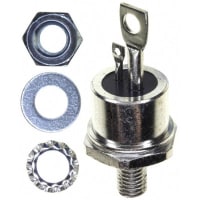
Min Qty: 10
Mult Of: 10

Min Qty: 10
Mult Of: 10
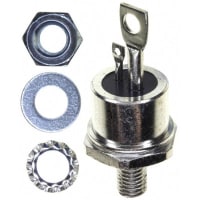
Min Qty: 10
Mult Of: 10
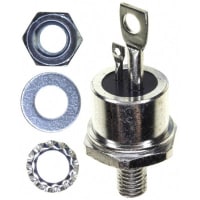
Min Qty: 10
Mult Of: 10

Min Qty: 10
Mult Of: 10
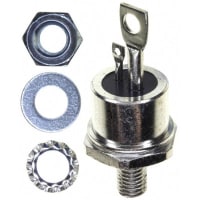
Min Qty: 10
Mult Of: 10

Min Qty: 10
Mult Of: 10
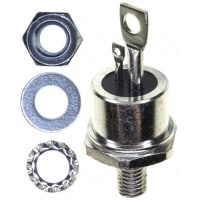
Min Qty: 10
Mult Of: 10
Min Qty: 10
Mult Of: 10
Min Qty: 10
Mult Of: 10
Min Qty: 10
Mult Of: 10
Min Qty: 10
Mult Of: 10
Min Qty: 10
Mult Of: 10
Min Qty: 10
Mult Of: 10
Min Qty: 10
Mult Of: 10
Min Qty: 10
Mult Of: 10
Min Qty: 10
Mult Of: 10





